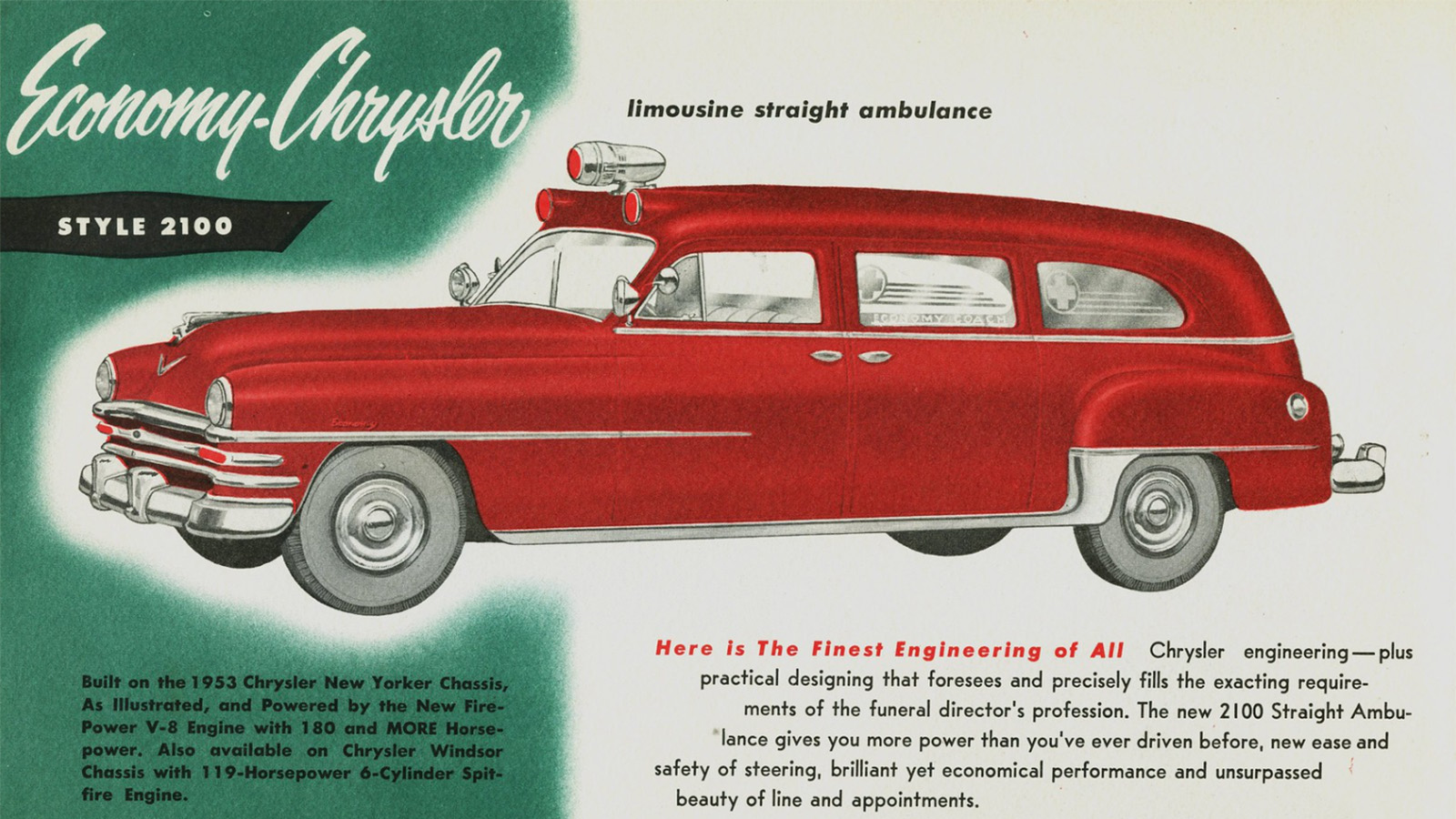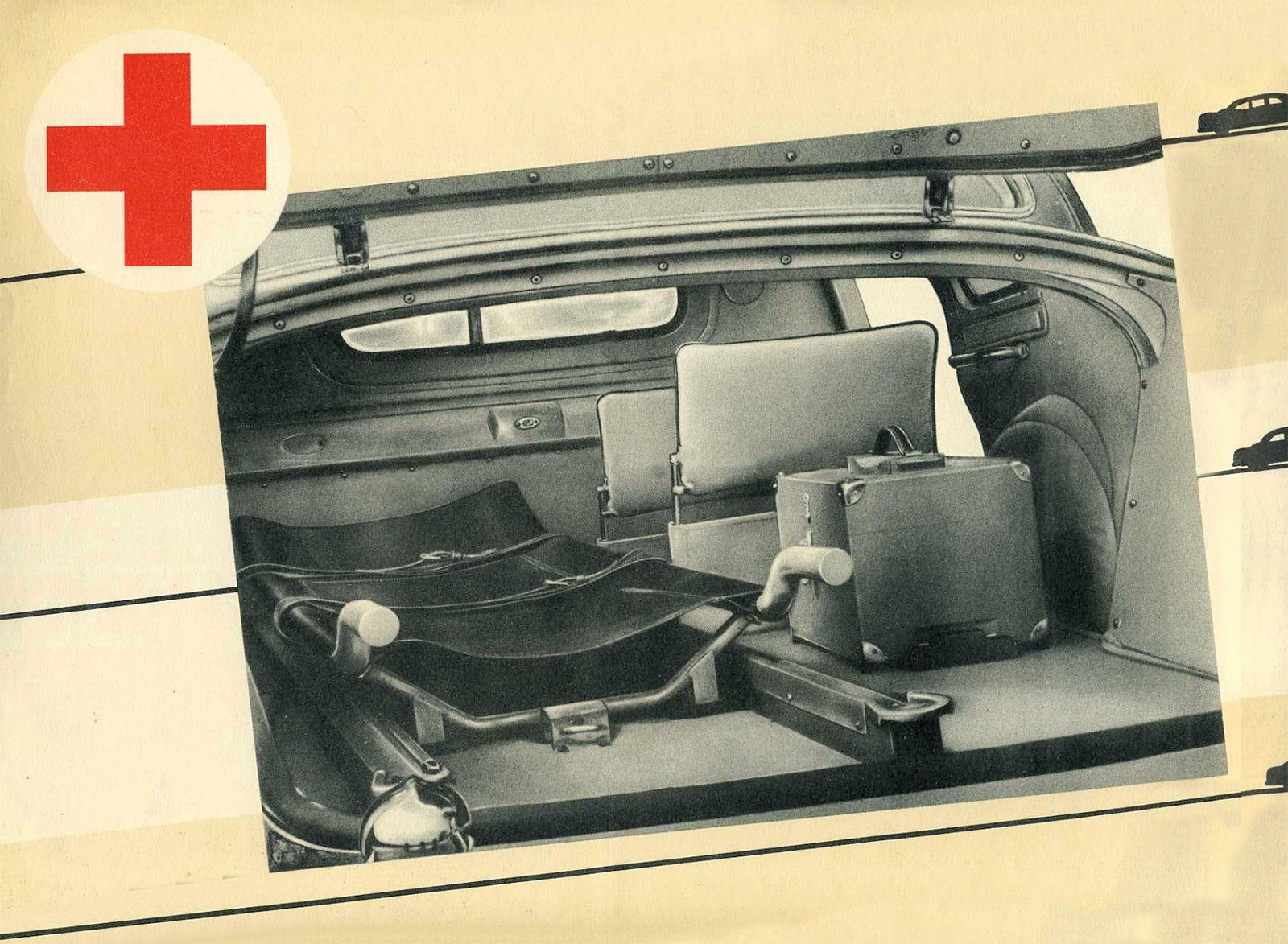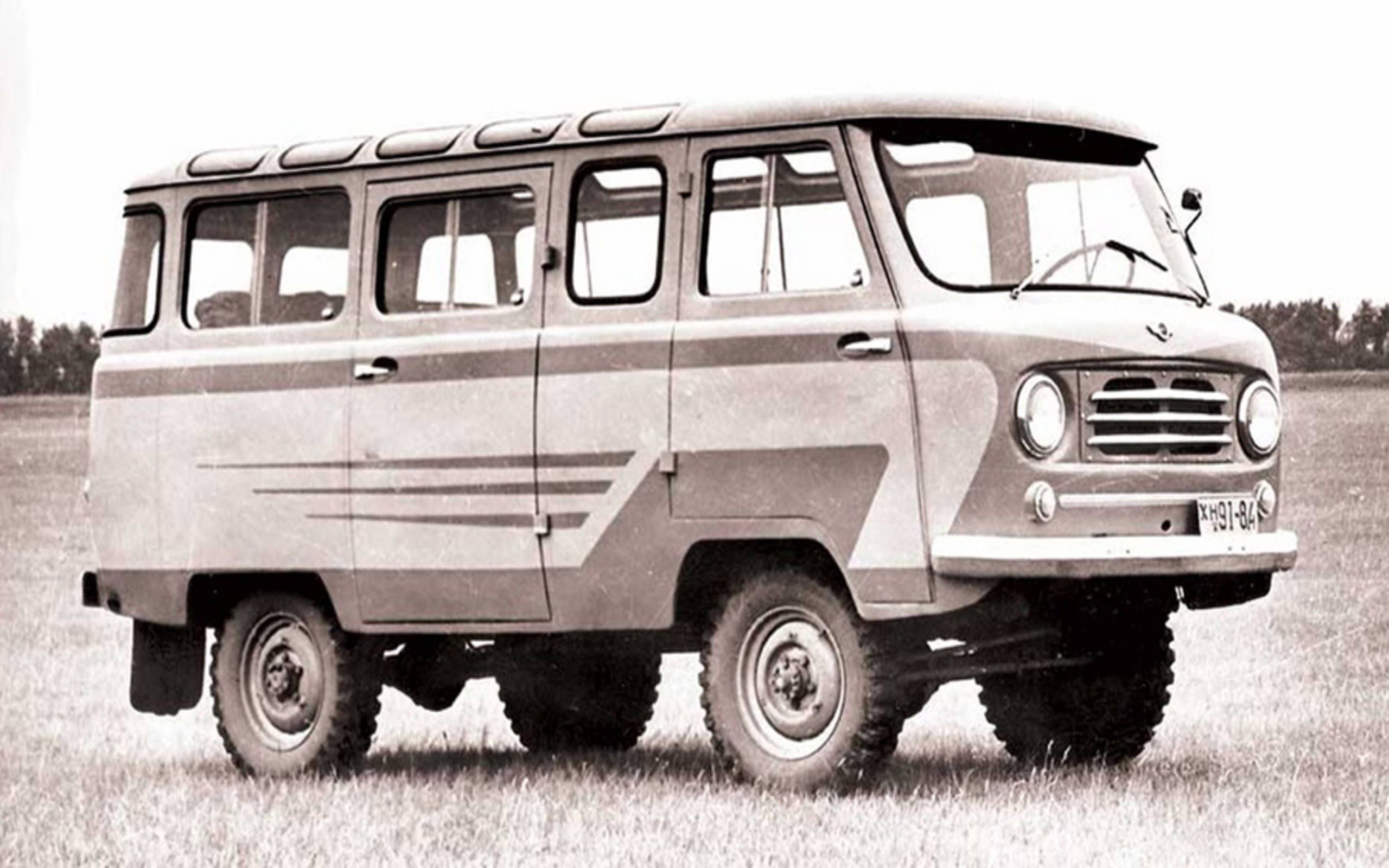As someone who has ridden in the not-fun part of an ambulance, I have to say that one of the things I most appreciated about the ambulance, even as hazily as I recall it, was that it was quite roomy back there. It was also reassuringly medical-looking, with gleaming stainless steel equipment and well-organized supplies stowed in cubbyholes. The whole thing just screams “you’re in competent hands.” But you know what? It’s possible to make an ambulance without any of these qualities, and people definitely did just that. Like this 1958 ZIM Ambulance, a design I’m calling the sedanbulance.
Making ambulances from passenger cars is hardly a new thing, and sometimes it works out quite well. While I think starting with a van always makes the most sense, for a number of reasons sometimes other initial platforms are chosen.
Station wagons, of course, are perhaps the next best thing to a van, and those have been used for ambulance conversions for decades:

I’m not really sure what those Rockettes (or whoever) in the background there have to do with ambulances, unless perhaps they all kick you at once, over and over. But, as you can see, that Cadillac has been pretty heavily converted into a roughly station-wagon-shaped sort of ambulance there.

There’s another one, this time a Chrysler New Yorker, which shows a strange trend of ambulance makers of the era to pick high-end cars for their conversions. Both of these cars shared chassis with lower-spec models; I wonder why they didn’t start with, say, a Chevy or Plymouth?

In Europe, there were also station wagon-based ambulances, like this Citroën ID, which is barely modified at all from its stock form. It’s not hugely roomy as an ambulance, but it’s not bad, and the hydropneumatic suspension likely is a huge asset here, too, keeping the patient nice and comfortable and level.
Van conversions still seem to provide the best solutions, of course. This VW Krankenwagen based on a Type 2 van is small on the outside but has plenty of room inside, being essentially a big box:

Sometimes, though, circumstances necessitated less-than-ideal starting points for ambulances. Take this other Volkswagen ambulance, this one based on a Beetle:

It’s an extremely clever setup, with a rotating stretcher holder that swivels the stretcher into the car, along with a door that can open almost flat against the car. It works, but it’s hardly ideal, really. These really only made sense before VW had the Type 2 in 1950, and was certainly better than nothing.
Wartime causes lots of demands for ambulances, and a certain willingness to make do with what you have or can make quickly, easily, and cheaply. That may explain this strangely and sorta literally half-ass Land Rover-based ambulance:

That hardly seems ideal, but, again, better than nothing.
But let’s get back to our Soviet friend here, the ZIM ambulance. This one is especially odd, I think, because it’s based on a conventional three-box sort of sedan, hardly the ideal starting point for an ambulance. That Beetle is technically a sedan, too, at least according to VW, but it’s not really a three-box type, and it has a motor at the rear instead of a trunk, so it’s quite different. I’m not sure I’ve seen a sedan ambulance conversion before, and in looking at how it works, you can see why sedanbulances didn’t catch on:

You, as an unwell person, get loaded in the back, through the trunk! While I’m sure this way makes the most sense, there’s just something, I don’t know, undignified about being shoved into a car trunk. You’re already having a lousy day, after all.
Of course, there’s not really a “trunk” as such, and you’re getting loaded into the modified interior of the car, which has two jump seats for medical professionals (or skilled amateurs) and a bulkhead between the rear and driver’s compartment. It’s functional, I guess, but I have to wonder why this exists at all when there were vans available in the Soviet Union at the time that seem like they would have been much better choices for an ambulance.
Take this 1958 UAZ-450, which shared engines with the common GAZ car, even:

And, of course, ambulances were made from those, which just makes me wonder why these ZIM sedanbulances needed to exist at all?
The copy for this sedanbulance brochure is pretty amazing, showing a rather loose relationship with English:

This sentence for example:
“The ZIM ambulance car is designed for transporting one sick on the stretcher accompanied by three medical men.”
One sick, three medical men. Sounds good to me! I mean, I can’t speak Russian, so I should probably shut my big yapper here, anyway.
I wonder how many of these were actually made, and, again, why? It’s such an odd choice for an ambulance, especially when there were so many other options available.
Oh well. I hope none of you ever have to go anywhere in a sedanbulance.









I’m assuming they used the highest trim available for the ambulances as they probably had the best / smoothest ride. Gives the patient a good morale boost too, you might have taken off your finger with a table saw, but you’re riding in style!
I’m guessing that they used this type of vehicle because that was just the main type of vehicle available and used back then (like now it’s CUV’s/SUV’s/trucks)
There were a few of these made here in the US right after the war, too.
It’s so capitalist spies would underestimate the Soviet Union’s true ambulance power.
They mostly used vans, I think, so it was probably just some bored engineer who just somehow erased it into production.
If you make the Ambulances too nice the survival rate is too high and the herse division lacks work.
I remember my father threatening to buy a Citroen Safari for my mother, she said no “They are huge and look like French herses.”
What the hell kind of kinked up sausage is on that stretcher?
They had to use a sedan, as a station wagon would have been too decadent.
These were mere taxicabs for the dying. You didn’t get certified EMTs, or a defibrillator, or really anything. My mom told me that in her day, the cops took you to the hospital.
This is why the TV show “Emergency” was a big deal in the early ’70s. For the first time, the ambulance could actually treat you, and the phone calls to the doctors at Rampart made a big difference too.